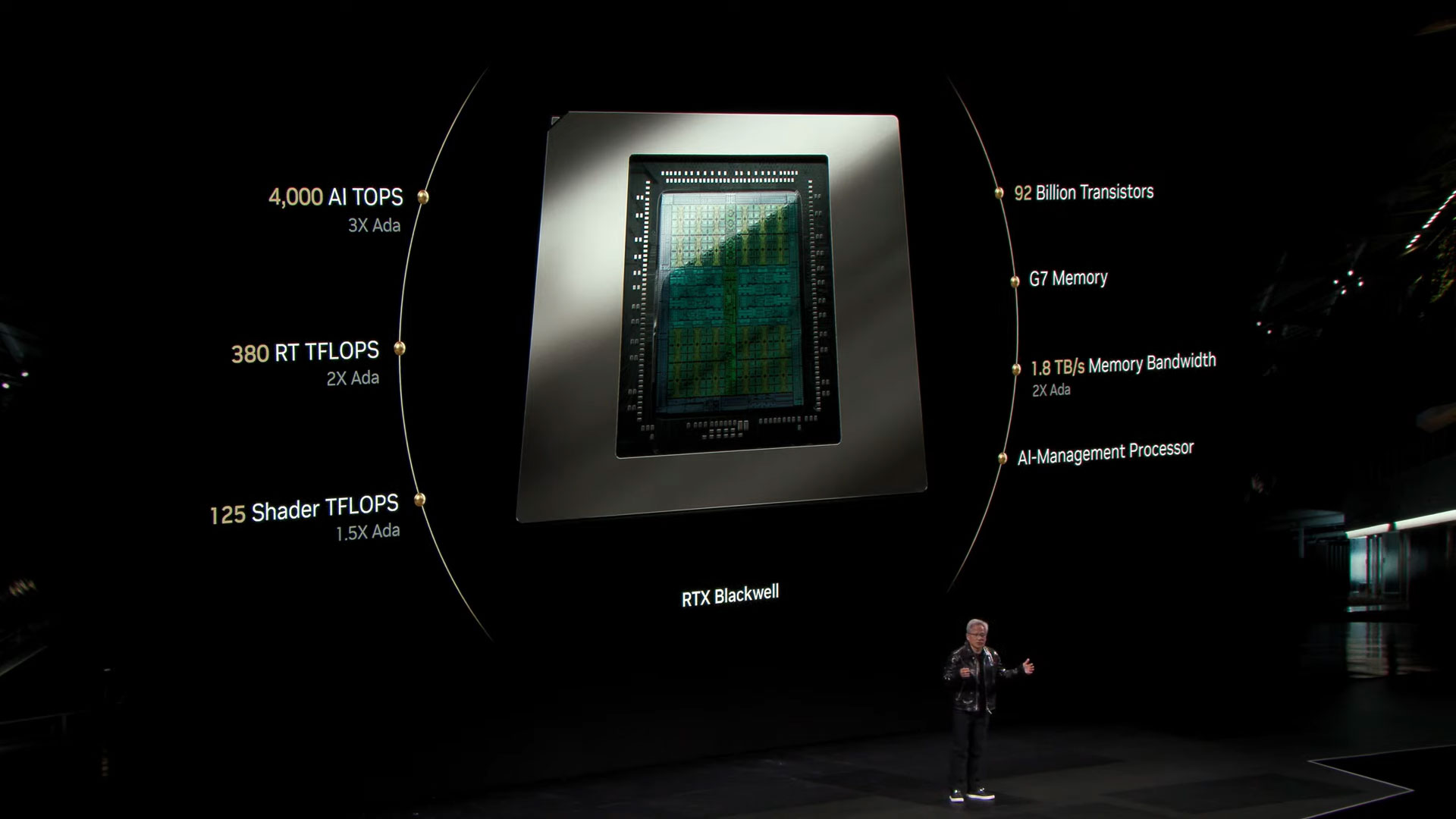
Nvidia's CES 2025 presentation showed off its new RTX 50-series graphics cards proudly, with the RTX 5090 through RTX 5070 all offering around double the performance of their previous-gen counterparts in the RTX 40-series. Nvidia credited this in its keynote to the brand-new Blackwell architecture. However, a look at Nvidia's in-house benchmarks reveals that the 2X improvements in games come more from the software suite of DLSS 4 than pure silicon vs. silicon matchups.
Deep Learning Super Sampling, or DLSS, has been a tentpole feature in Nvidia's consumer graphics cards since the RTX 20-series. DLSS 4's software suite includes a bevy of new and improved AI features that increase in-game performance and visual quality over last-gen's DLSS 3/3.5. Software and hardware improvements lead to upgrades in DLSS's Super Resolution upscaling, ray reconstruction, and frame generation, a feature which AI generates one extra frame per rendered frame.
DLSS 4 steps this up to Multi Frame Generation, a process that can generate up to three frames based on one rendered frame. This can effectively step a 30 FPS experience up to 120 FPS by generating and inserting the extra frames. But as with regular framegen, it's really about frame smoothing than truly boosting performance — user input still gets sampled at a far slower rate, and latency concerns linger.
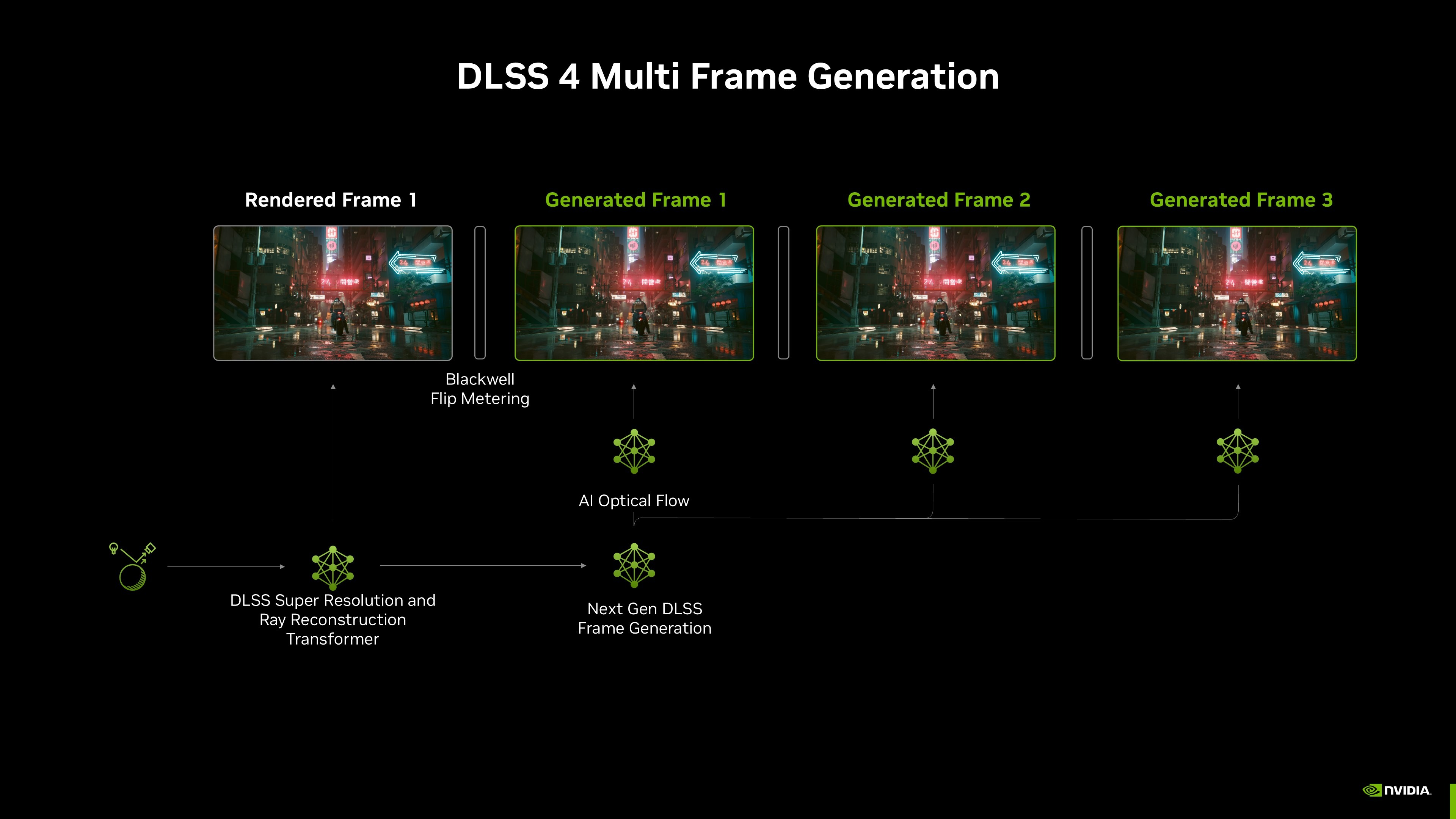
The DLSS 4 suite is, per Nvidia's testing, better in every way than DLSS 3. Nvidia's own relative performance benchmarks for the RTX 5090, 5080, 5070 Ti, and 5070, which pit the new cards against their previous-generation counterparts (RTX 4090, etc.), seek to prove this point exactly.
All the upcoming cards more than double last-gen performance in Cyberpunk 2077, Black Myth: Wukong, and Alan Wake 2, all in 4K Max settings with full RT. There's also a D5 Render productivity benchmark. However, the fine print reveals that though some DLSS 4 features will come to 40-series and older cards, DLSS 3 was used on the 40-series cards in testing.
It's not exactly wrong to test this way; DLSS 4 has not yet rolled out to older cards and Multi Frame Generation will only ever be available on the 50-series cards thanks to its specific hardware upgrades (or at least, that's the story Nvidia is telling). But the lead shrinks to a 1.5x boost or lower in games where DLSS 4 isn't available.
A Plague Tale: Requiem was tested with DLSS 3 on all cards, while Far Cry 6 was tested without DLSS (which it doesn't support) and turned in a meager 1.25X generational improvement.
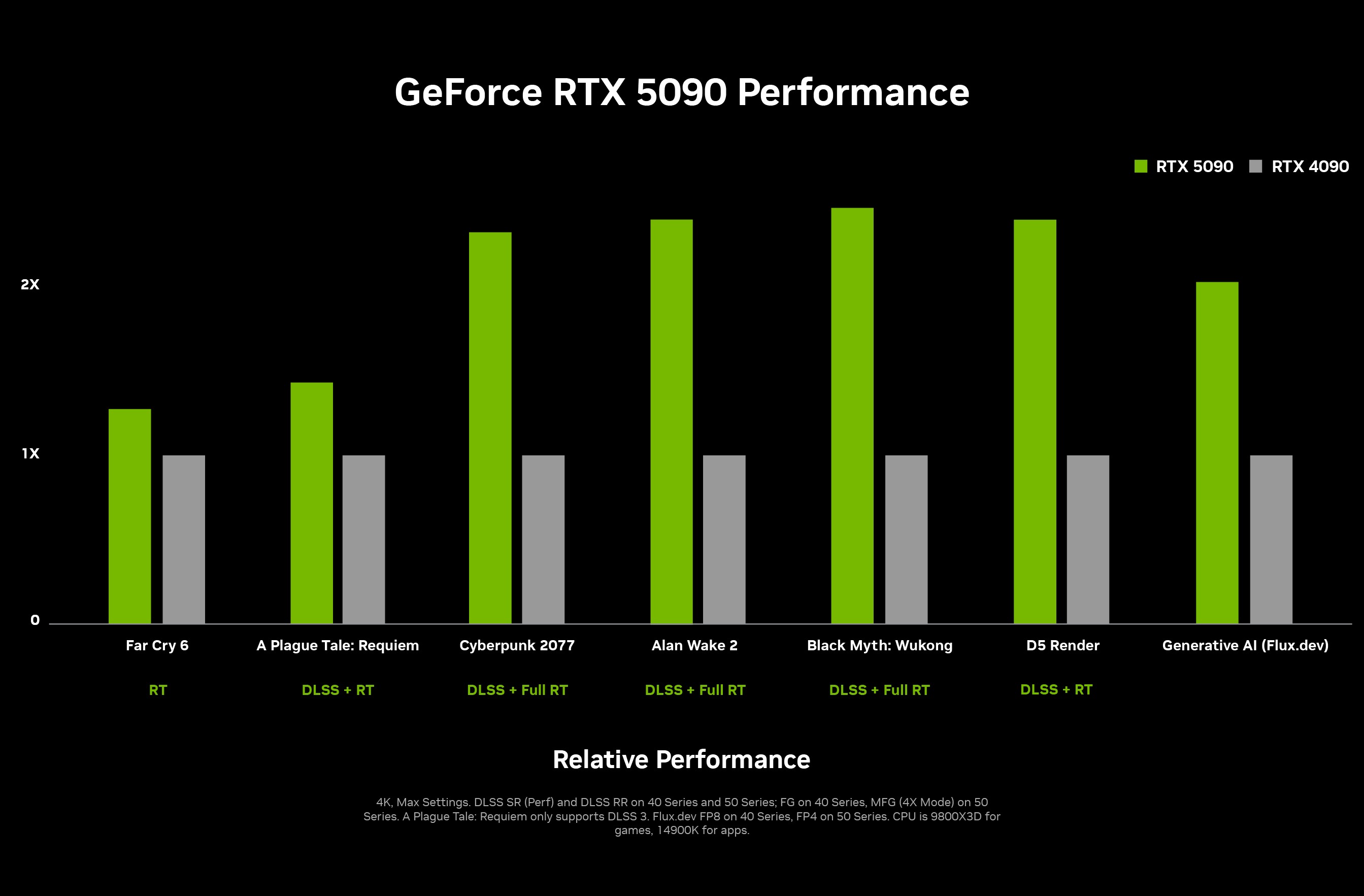
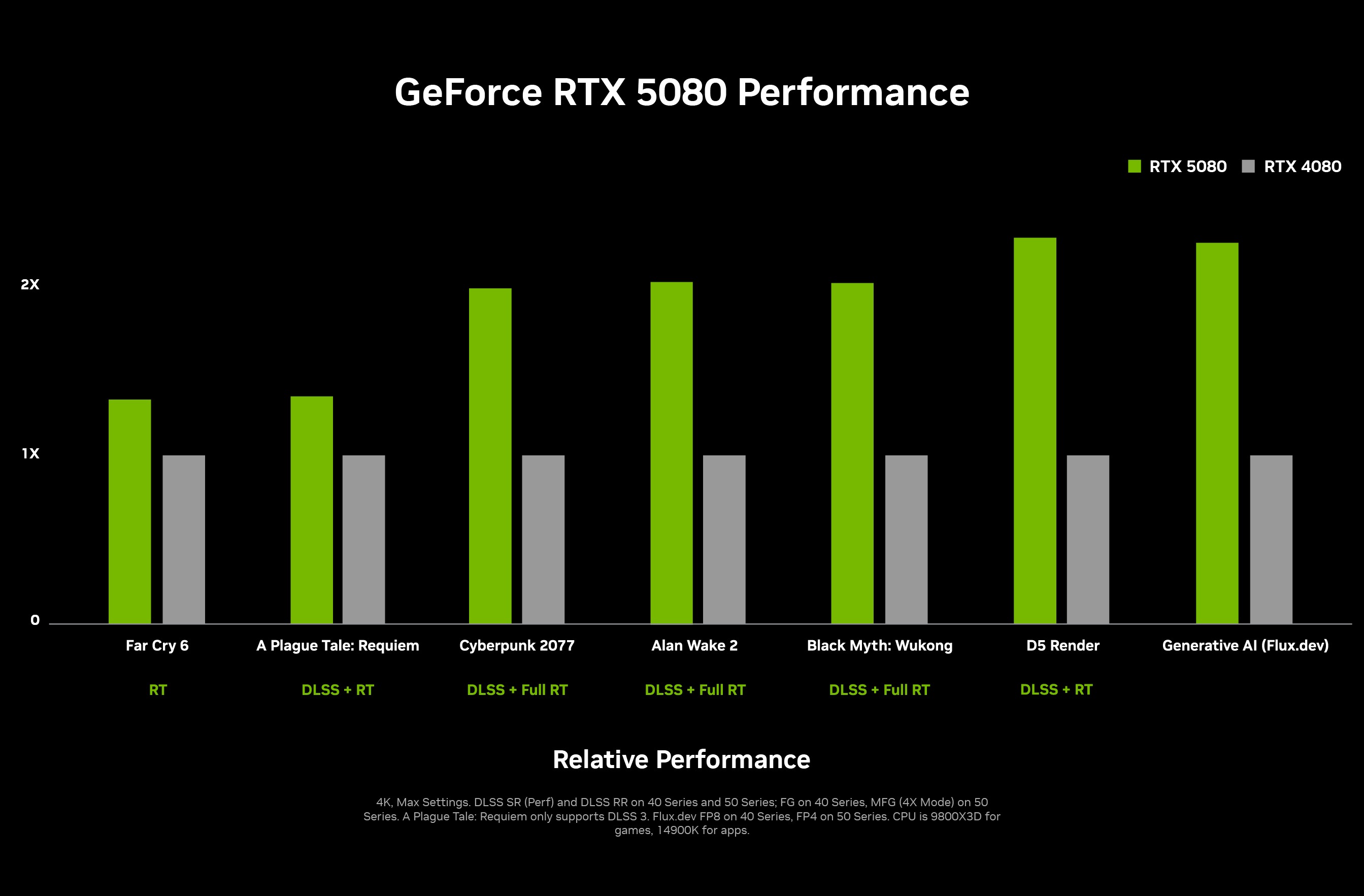
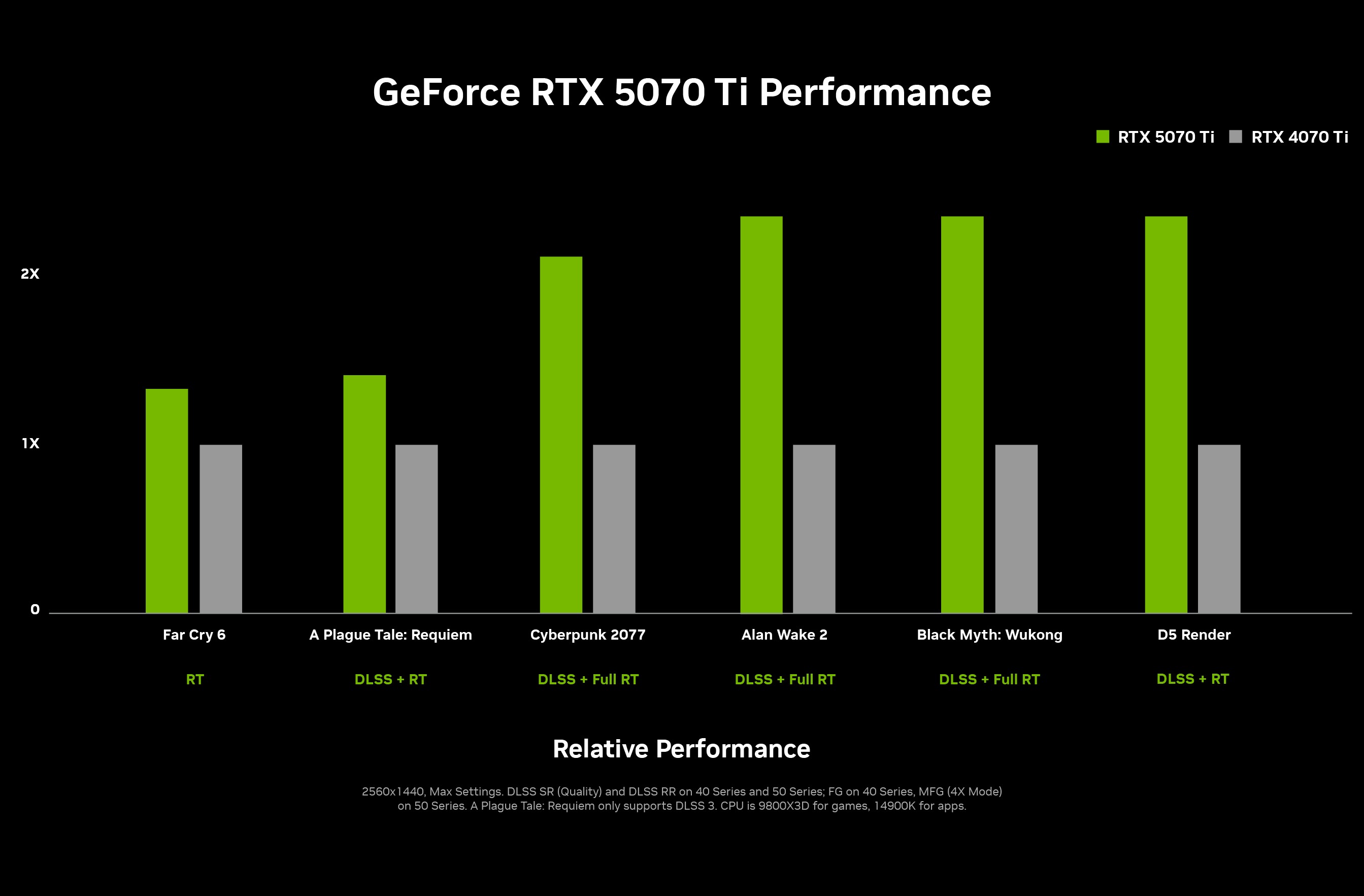
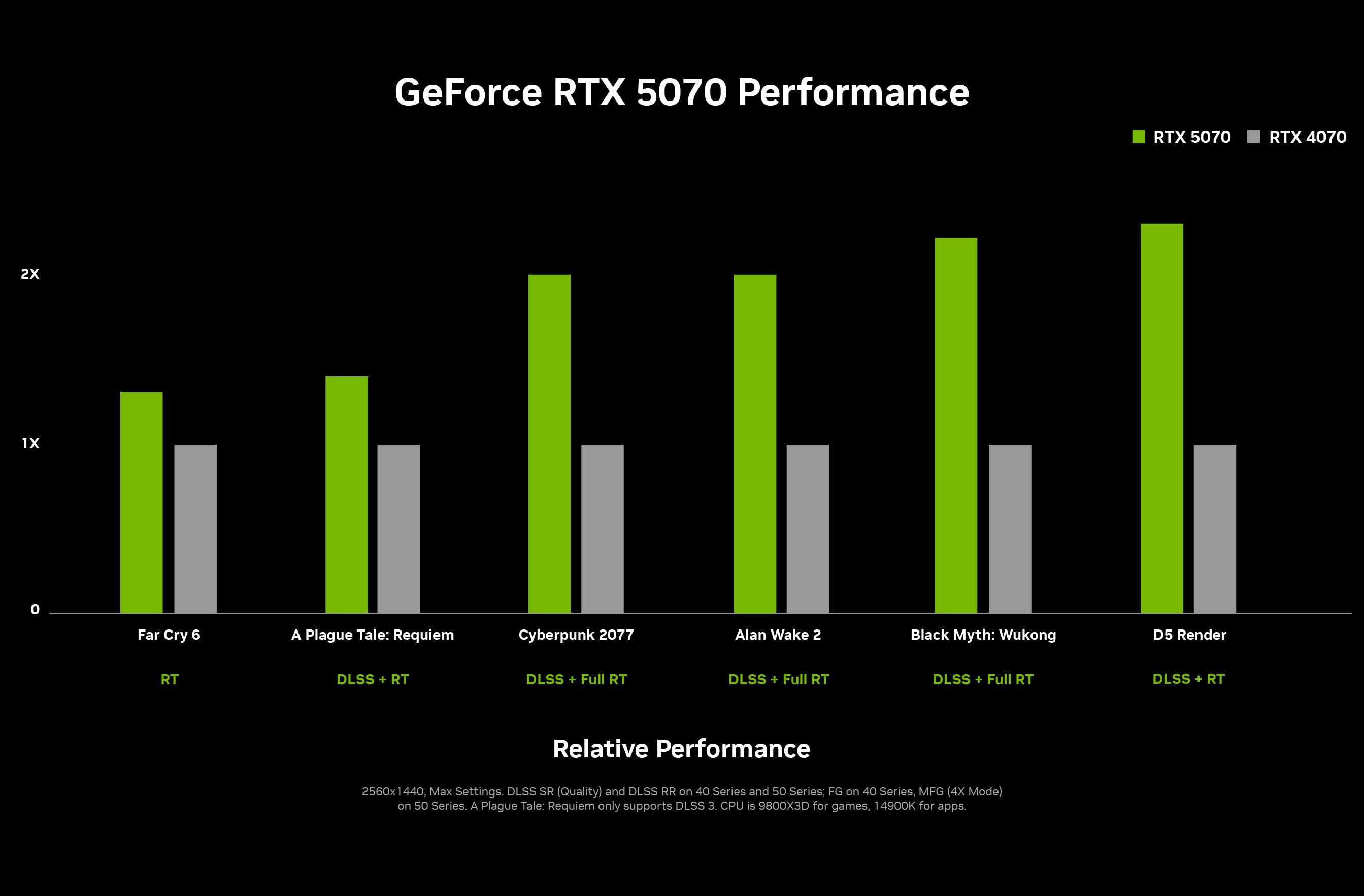
Any gamers who purchase the RTX 50-series will want to crank all the DLSS 4 settings and features up to eleven to see true performance improvements beyond the 40-series. When the 50-series arrives, beginning this month, some DLSS 4 upgrades will also roll down to older cards, improving visuals and performance alongside the 50 series.
DLSS 4's Multi Frame Generation is also made interesting thanks to how it plays with input latency. Because of how Multi Frame Generation works (after two frames are rendered in the usual way, up to three intermediate frames get generated to fill in the gaps), some amount of input latency gets introduced as the generated frames are created without any new input data. But it's no worse than regular framegen in that regard; Multi Frame Generation simply creates the intermediate frames faster than the 40-series framegen. There's also Reflex 2, a technology that seeks to squash input lag and further help make up for Multi Frame Generation's extra required headroom.
The appropriately named sequel to 2020's Reflex, Reflex 2 reduces latency in games by up to 75%, beating Reflex 1's 50% reduction. A standard latency pipeline follows mouse/keyboard inputs from the CPU, to the render queue, to the GPU, which then outputs an image around 58 milliseconds later. Reflex is an SDK that seeks to better synchronize the CPU and GPU, submitting updated input data from CPU to GPU just before it's needed, bypassing the render queue and taking latency as low as 28ms. 90% of gamers keep Reflex on in its over 100 supported games, per Nvidia.
Reflex 2 performs this improved queueing process even faster than Reflex 1, and adds a bonus layer to its pipeline. "Frame Warp" can take super-quick mouse movements and, rather than render the new angle, simply warp the existing frame in the direction of the input, further reducing input lag by removing the need for a full render. A predictive algorithm paints in the gaps in the new warped frame's edges, and voila; latency is further cut down to 14ms.
If you're confused by this witchcraft, the simplified explanation is that Reflex 2 further improves input lag and can help overcome the added frame latency of DLSS 4's Multi Frame Gen for those who buy an RTX 50-series GPU. A much deeper explanation can be found in Nvidia's Reflex 2 video below.
Nvidia's RTX 50-series on Blackwell has been long awaited by consumers, and its twice-as-fast performance numbers over the RTX 40-series seem incredibly impressive. But while Blackwell may have more memory bandwidth and more powerful ray tracing cores compared to Ada silicon, the claimed gap in real-world performance between the two generations really come from DLSS 4's software-side improvements over the last gen. And of course, this is all based on Nvidia's own in-house benchmarks; once RTX 5090 and 5080 arrive for testing sometime this month, we will be able to more quantitatively support these numbers.
Check back for our full testing of the RTX 50-series once the cards launch beginning sometime this month, and be sure to keep an eye on Tom's Hardware's CES 2025 coverage as the conference continues this week.







